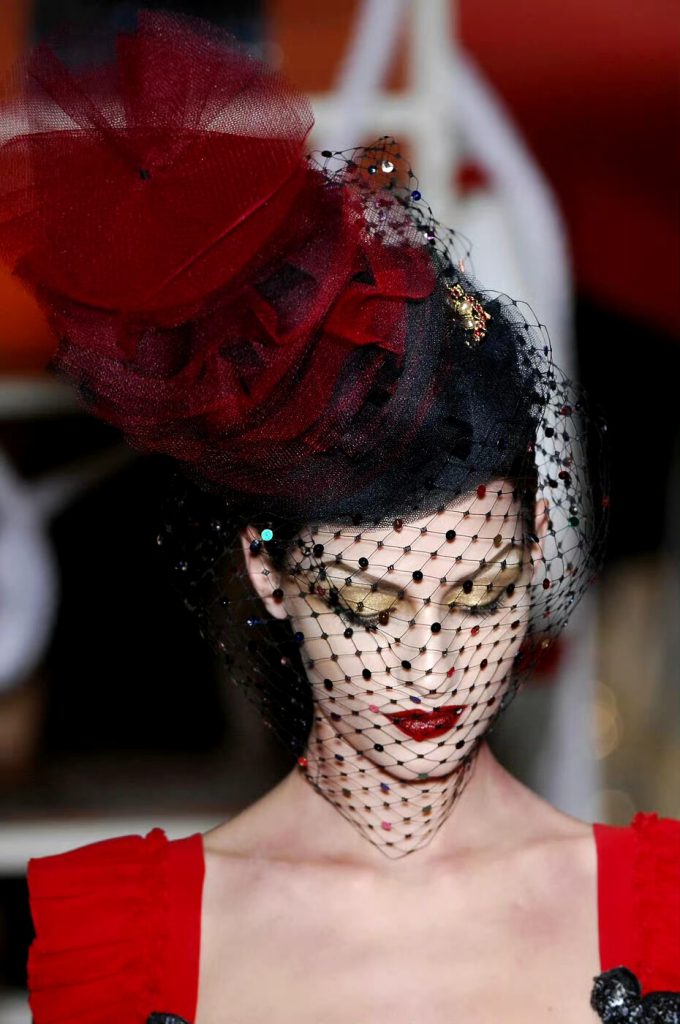
The meaning of veil may be different in different cultures, so the cultural background should be considered first. For example, the veil in Islamic culture and the veil in western fashion may have different symbolic meanings. Hazy beauty itself may involve aesthetic theories, such as the combination of reality and reality, mystery and so on.
People who are interested in fashion, cultural studies or art. They may want to know why the veil can produce beauty, or the cultural and social significance behind it. It is necessary to distinguish the functionality and decoration of the veil, such as the difference between the veil in religious occasions and the veil in fashion.
Then, consider the specific performance of hazy beauty. The veil is half covered, which may lead to association and increase mystery, which is common in art and literature. For example, Leonardo da Vinci’s Mona Lisa smiles, and the veil may play a similar role. At the same time, the veil may involve the social construction of female images, such as the contradiction between protection, purity and temptation.
Also pay attention to different viewpoints. In some cases, the veil may be regarded as a symbol of oppression, while in other cases, it is a woman’s independent choice. It is necessary to balance these perspectives and avoid being too one-sided. It may also be mentioned how the veil in modern fashion reinterprets traditional elements and gives them new aesthetic value.
In addition, the significance of veil in contemporary society, or how to apply this hazy beauty to modern design. So when answering, we should not only talk about history and culture, but also connect with reality.
The hazy beauty carried by the female veil is a cultural symbol and aesthetic image that spans time and space. The generation of this aesthetic feeling is not simply due to the concealment and exposure of vision, but an elaborate dialectic between reality and reality: when the veil brushes over the face, it is not only a deconstruction of visual integrity, but also an invitation to imagination. The translucent barrier created by the veil on the physical level actually builds a dynamic viewing theater-every time the breeze blows, the fold changes are reconstructing the power relationship between the viewer and the wearer.
Tracing back from the dimension of art history, this hazy aesthetics has been realized in the lace veil of Venice in the Renaissance. The ladies in Titian’s works often cover their faces with gauze, and the painter uses glaze dyeing technique to treat the gauze as a flowing halo, which makes the facial contour have a breath-like rhythm in the alternation of reality and reality. This technique breaks through the limitation of plane painting, introduces the time dimension into static portrait, and makes the viewer experience the gradual awakening of vision in gazing.
The semantic field of veil in contemporary context is more complicated. In yohji yamamoto’s Fall/Winter 2019 collection, the metal mesh mask worn by the model deconstructs the traditional concept of shielding and creates the future aesthetics in cyberspace format. This design transforms the veil from the gazed object into an active visual weapon, and the mesh structure is like a pixel filter in the digital age, which not only retains facial recognition features but also gives it a metaphor for data encryption.
Anthropological perspective reveals that the obscurity of veil is actually a visual rhetoric of cultural coding. In the traditional Moroccan wedding, the bride wears the Hendria veil with complicated embroidery patterns, and its light transmittance is accurately calculated, which can not only maintain the dignified image required by etiquette, but also allow the bride to show the carefully decorated facial contour at a specific angle. This controllable visual leakage mechanism is actually a dynamic balance device between social discipline and individual expression.
Neuroaesthetic research provides a new interpretation path: functional magnetic resonance imaging (fMRI) shows that the activation degree of fusiform gyrus’s face area is enhanced by 37% compared with that of fully exposed face when the observer faces a semi-masked face. This paradox of neural response implies that the cognitive gap created by the veil forces the brain to start the compensation mechanism and form a special aesthetic circuit between the visual cortex and the limbic system. Hazy is transformed into a cognitive catalyst here, and simple visual reception is sublimated into creative gestalt construction.
In the era of digital media, veil aesthetics has evolved into a mixed reality of reality and reality. The popular “digital veil” special effect in Instagram filter superimposes a dynamic light and shadow layer on the user’s face through an algorithm. This technology empowers each individual to independently control the scale of mystery. When the physical veil is transformed into an adjustable AR interface, the essence of hazy aesthetics changes from passive masking to active interface design, redefining the visual politics in the post-human era.
